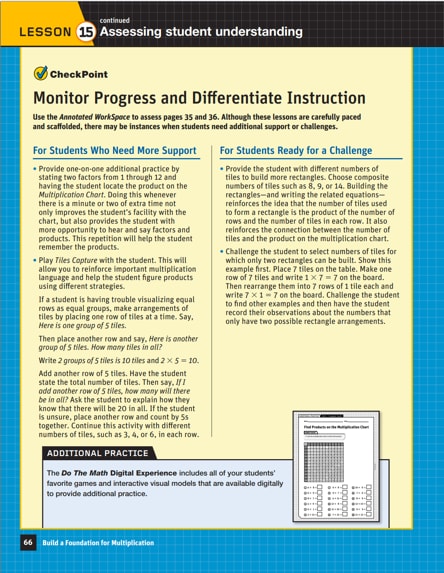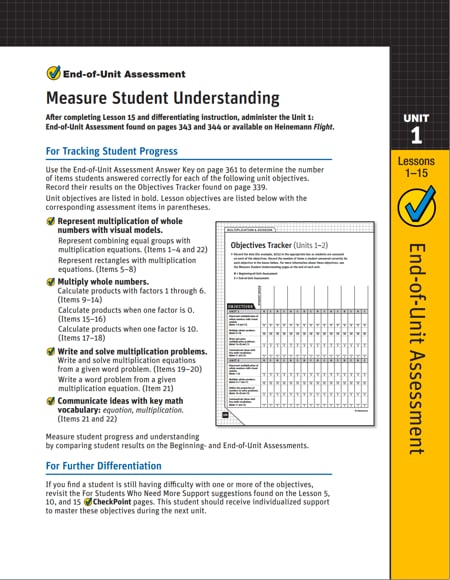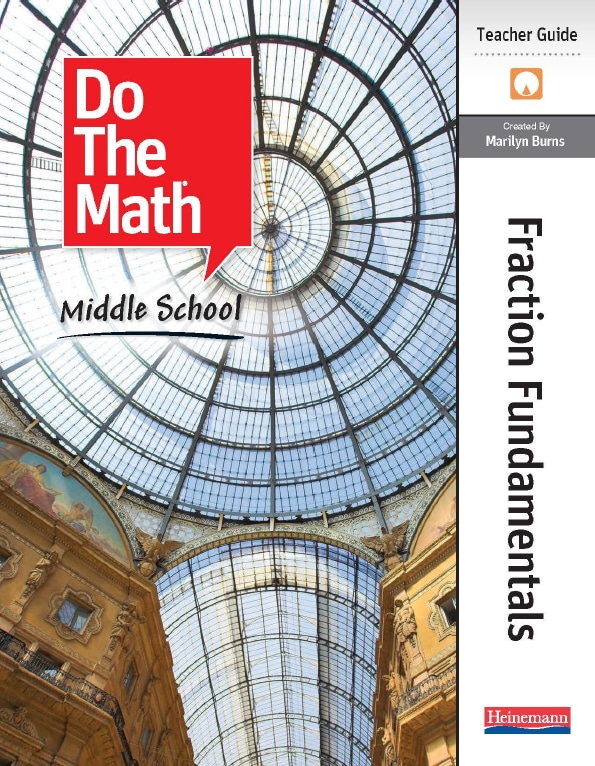Building the Foundations for Algebra
Trusted, respected intervention and education leadership that helps older, struggling students and their teachers in three important ways.
Focused & Coherent Content
Do The Math Middle School helps students build deep understanding, learn to reason mathematically, and make connections across operations. Students can apply their skills to higher-level mathematics, including critical foundations of algebra.
Teacher Support
Written and developed by Marilyn Burns, one of today’s most highly respected mathematics educators, the research-based lessons in Do The Math Middle School supports teachers in understanding and delivering effective math intervention.
Student Motivation & Support
Students experience success early with instruction organized into manageable chunks. Do The Math Middle School empowers students to think about math in new ways with sequenced and paced learning and teaching for improving achievement.
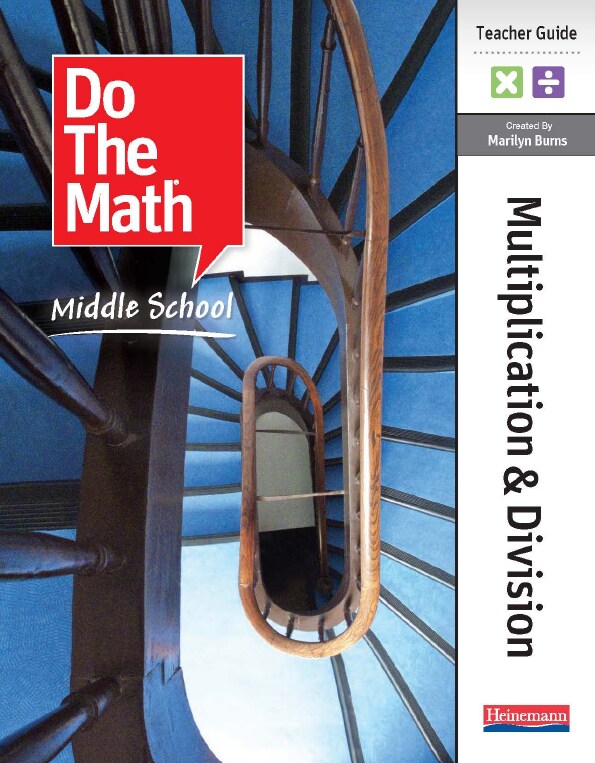
Develop visual representations and reasoning skills that strengthen students’ conceptual understanding and computational skills. At the foundation of the lessons are applying the place-value structure of our number system and properties of numbers.
Unit 1: Build a Foundation for Multiplication
Although students may have previous experience with multiplication, lessons take a step back in this unit to deepen students’ conceptual understanding of the meaning of multiplication by drawing on real-world contexts and rectangular arrays.
Unit 2: Develop Multiplication Number Sense
Students are actively engaged with the Commutative, Associative, and Distributive Properties of Multiplication. Students explore patterns on the multiplication chart and use visual models of rectangles to represent basic facts, deepening their understanding and number sense.
Unit 3: Use Place-Value Strategies to Multiply
Students learn the useful strategy of splitting factors into their place-value parts. They apply these strategies to estimate and solve multi-digit multiplication problems.
Unit 4: Connect Multiplication and Division
These lessons build on students’ understanding of multiplication to develop the relations between multiplication and division. Students solve division group problems, explore divisibility, and calculate quotients and remainders.
Unit 5: Use Place-Value Strategies to Divide
These lessons focus on deepening students’ understanding of the division process. Students solve three-digit dividend problems and extend their skills to the division of two-digit divisors.
Proven Instructional Strategies
Elevate learning with research-based intervention
Do The Math Middle School is for older, striving learners. Research shows students with diverse needs succeed in learning mathematics through explicit, intentional teaching based on proven instructional strategies. Research-based instructional principles include:
- Scaffolded Content: Scaffolding of the content makes the mathematics more accessible to students.
- Explicit Instruction: Students benefit from instruction based on teaching for understanding.
- Multiple Strategies: Multiple strategies for developing concepts and skills support student learning.
- Gradual Release: Four-phased pedagogy built on gradual release prepares students for individual success.
- Meaningful Practice: Assignments provide opportunities to practice, strengthen, and extend their learning.
- "Think, Pair, Share": Research shows that student interaction such as “think, pair, share” deepens student understanding.
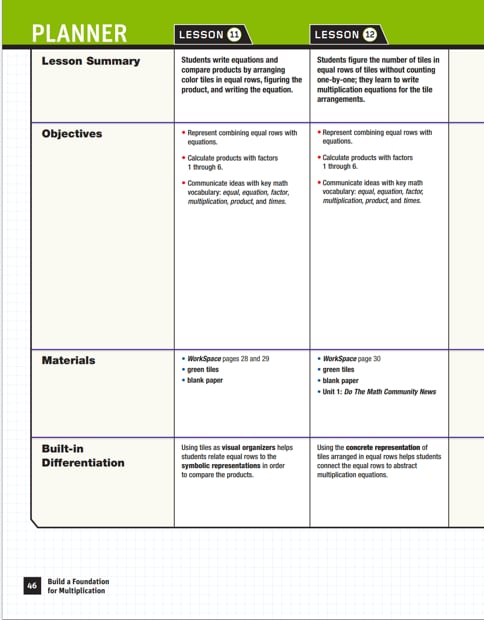
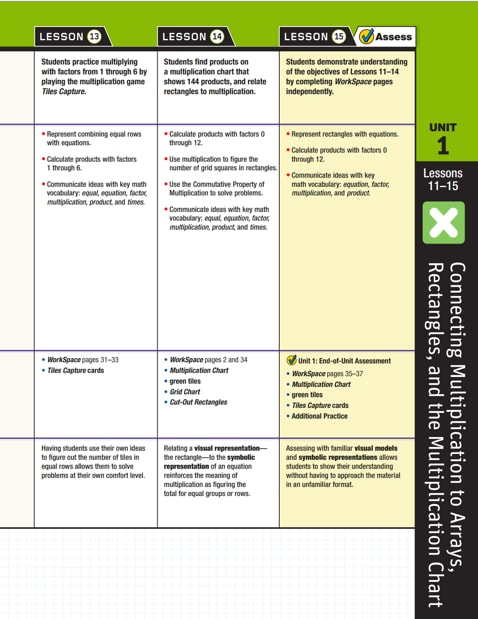
- Vocabulary and Language: Intentional vocabulary instruction helps students develop effective communication about the math they are learning.
- Differentiation: Ongoing assessment is built into the program to help teachers meet individual student needs.
Effective, Efficient Program Structure
Build confidence with insight from ongoing assessments.
Along with Beginning-of-Unit and End-of-Unit Assessments that measure understanding, every fifth lesson is an assessment that provides an opportunity to monitor student progress.
Teachers get the resources and direction to effectively prepare, teach the lesson, and assess student understanding. Teacher Guides include ten units with 15 lessons each. Instructional support for reach lesson includes:
- Lesson Summary
- Objectives
- Materials
- Teacher Display Tools
- Preparation
- Language Development
- Step-by-Step Instruction
